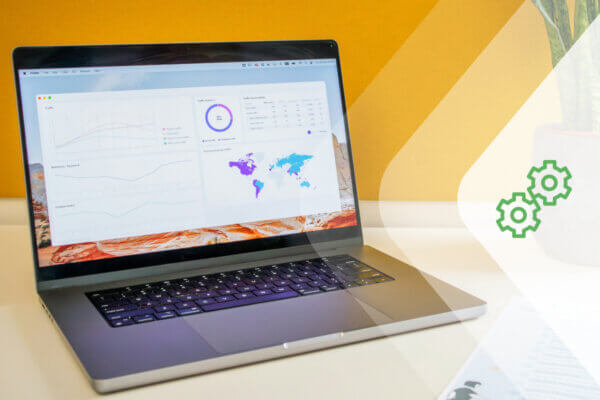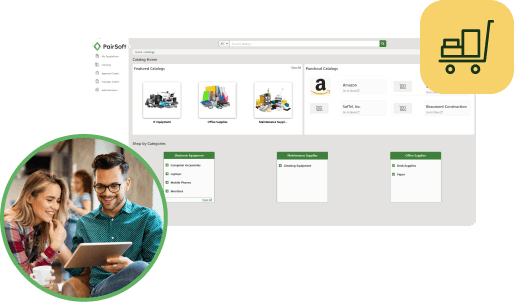The term “procurement” is often confused with purchasing and sourcing, but it’s a different function entirely. Procurement is the acquisition of defined goods and services that are vital to the function and success of an organization. While this area of enterprise operations might be lower-profile, effectively procuring can set you apart as an employee and ensure your business runs efficiently.. Let’s review what it takes to become a procurement leader.
What is the procurement process?
The basic steps of the procurement process include identification of a product or service need, informing stakeholders, identifying sourcing funnels and determine pricing and terms. Procuring these products or services from vendors, seek approval on invoices and payment all while documenting every step. Efficient replenishment is paramount to the procurement cycle to ensure that this vital part of an organizations operates as efficiently and timely as possible.
What is effective procurement?
To become and remain a leader in procurement, you must become educated and aware of some trends that can affect procurement. From foreign affairs, like trade deals, to cybersecurity crimes — as a procurement leader, it is a part of your role to adjust operations as fit to ensure smooth operation of the organization continue. For any industry you are a procurement leader in, be sure to remain vigilant and informed on trends that can affect your cycles..
Other steps to save in the procurement process include streamlining the requisition process, consolidating buying power, monitoring vendor contracts, purchasing from guided buying catalogs and bringing more spend under direct control. These steps may assist in the efficient management of your replenishment cycles and establishing future procurements.
For example, professional sports requires a specific procurement and expense management plan. They can be fun to watch, and also provide lessons for companies managing massive expenses with an inevitable win or loss at stake. Some key challenges that teams and franchises face include implementing a software solution to track and manage vendors who supply gear and equipment; managing and securing travel within budget and organizing the approval process for staff operating around the country..
How do you succeed in procurement?
Within your procurement role, you can succeed by avoiding procurement mistakes and performing your duties exceptionally well in your industry or sector, whether it’s local government or hospitality. To achieve success in procurement, you should additionally consider improving spend visibility, so your company has a clear understanding of how its spending compares to overall budget. You should be able to clearly explain the story behind every outgoing dollar, including who requested money, who approved a transaction, and any revisions along the way. Documentation of your process is your data points!
As a procurement leader, you can also aim to control your company’s costs by automating certain processes, using time cycles more efficiently, and overall reducing unmanaged spending. Some traits of the most successful procurement professionals include exceptional negotiation skills, willingness to leverage new technology, focus on the details as well as big-picture strategies, financial responsibility, and service-oriented mindset.
Steps to Become a Procurement Leader
Step 1 – Use data to your advantage
Using data as part of your procurement strategy can help you demonstrate your skill and adeptness in ensuring an organization uses its time and resources most efficiently. Modern procurement professionals manage data to deliver valuable insights for team members which promotes business’ growth and profitability. Familiarize yourself with the data that you should monitor to best deliver insights, then monitor it, keep it secure, and leverage it into information that informs the organization’s higher-level decisions.
Step 2 – Keep clear, electronic, detailed records
If a professional at another level of your organization needs information on the procurement cycle, they should have to look no further than you. Keeping auditable records of your company’s purchasing activities helps streamline items like invoicing and builds an electronic trail of purchasing history and is a valuable set of information for decision makers.
Step 3 – Measure your performance wisely
Making the case for growth in your industry or sector as a procurement leader will require more than pointing to money you helped your organization save. To be more proactive in growing, you can identify and improve other key metrics to measure your contributions. Those metrics might include procurement cycle time, by efficiently producing and approving a vendor. You might also consider targeting certain areas of unmanaged spending to own yourself, so you can better deliver value and reduce unmanaged spend for your organization’s maximum benefit.
Get creative about ways your organization can save: The bottom line might be hit harder than you expect after replenishing an order, and you may need to think swiftly about developing a short-term strategy to save. Your usual go-to might not work, so it’s best to have a few other ideas. Procurement professionals who save wisely consider actions like consolidating buying power, purchasing items on your own from guided catalogs, and aim to oversee more spending. To better achieve the perennial goal of saving money, try this procure-to-pay calculator.






